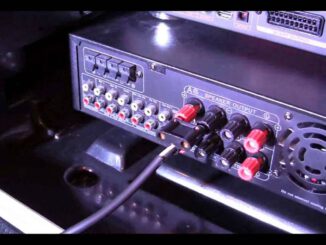 Many people are not familiar with the difference between class A and class A/B circuits, even tough it has a huge effect on an amplifier’s tone. The basic answer is this: These two classes of amplification illustrate two different types of output tube (or power amp tube, as some people like to call them) wiring.
Many people are not familiar with the difference between class A and class A/B circuits, even tough it has a huge effect on an amplifier’s tone. The basic answer is this: These two classes of amplification illustrate two different types of output tube (or power amp tube, as some people like to call them) wiring.
In a class A/B circuit, although the tubes have voltage applied to them so they are always powered and lit up, the tubes aren’t really on until signal is applied to the tubes’ input, which is called the grid. In this circuit, signal is applied to the tubes when you play. Most amps that we know and love, like Marshalls, Fenders, Ampegs and Hiwatts, Kendricks, to name a few, utilize this type of circuit.
n the case of class A circuit, plate current is always flowing in the tube, so the tube is always on, even when you’re not playing and no signal is being applied to the grid. The most well-known examples of class A amplifiers are the Vox AC30 and Vox AC15. Some vintage Marshall amps use EL84 power amp tubes, like the 20-watt PA head, along with British-made Selmer amps are also class A amplifiers.
Another difference between class A and class A/B is that class A amplifiers are cathode biased, and class A/B amps are grid biased and adjustable. That means that the output tubes on a class A amp does not have an adjustable bias. This type of bias enables the current to always flow in the tube, which enables the amp to always be “on.”
The biggest musical difference between these two electronic circuits is that you get a lot more of a “bark” and a much faster attack from a tube that is always on (class A), as opposed to a tube that is opening and closing when you start and stop to playing (class A/B). Class A amps also commonly display an interesting phenomenon in which a 30-watt amp will seem as loud as a 100-watt amp.
The best analogy I can think of is that a class A/B amp is like a car idling at a stop light. When the light turns green and you step on the accelerator, there is a “rise time” involved before the car achieves cruising speed. With a class A amp you have something like a high performance race car that, unless you keep your foot on the brake, is gonna take off like a rocket! Much like any other piece of high performance equipment, almost all components, especially tubes, in a class A amp will have a shorter life span because they are taxed so much from being on all the time. In a class A/B amp, the life span of tubes and every other component is going to be much longer.
I hope this helps you understand class A/B and class A amplification a little better. If you’ve never heard of class A amp like an AC30, check it out. You may find that you prefer the faster attack and responsiveness.
Join us at Gear-Monkey Music Forum for more tube amplification discussions



![Speaker Cabinet Designs 101 [How To Build a Speaker Cabinet] 5 how to build a guitar speaker cabinet](https://gear-vault.com/wp-content/uploads/2008/12/speaker-cabinet.jpg)

Be the first to comment